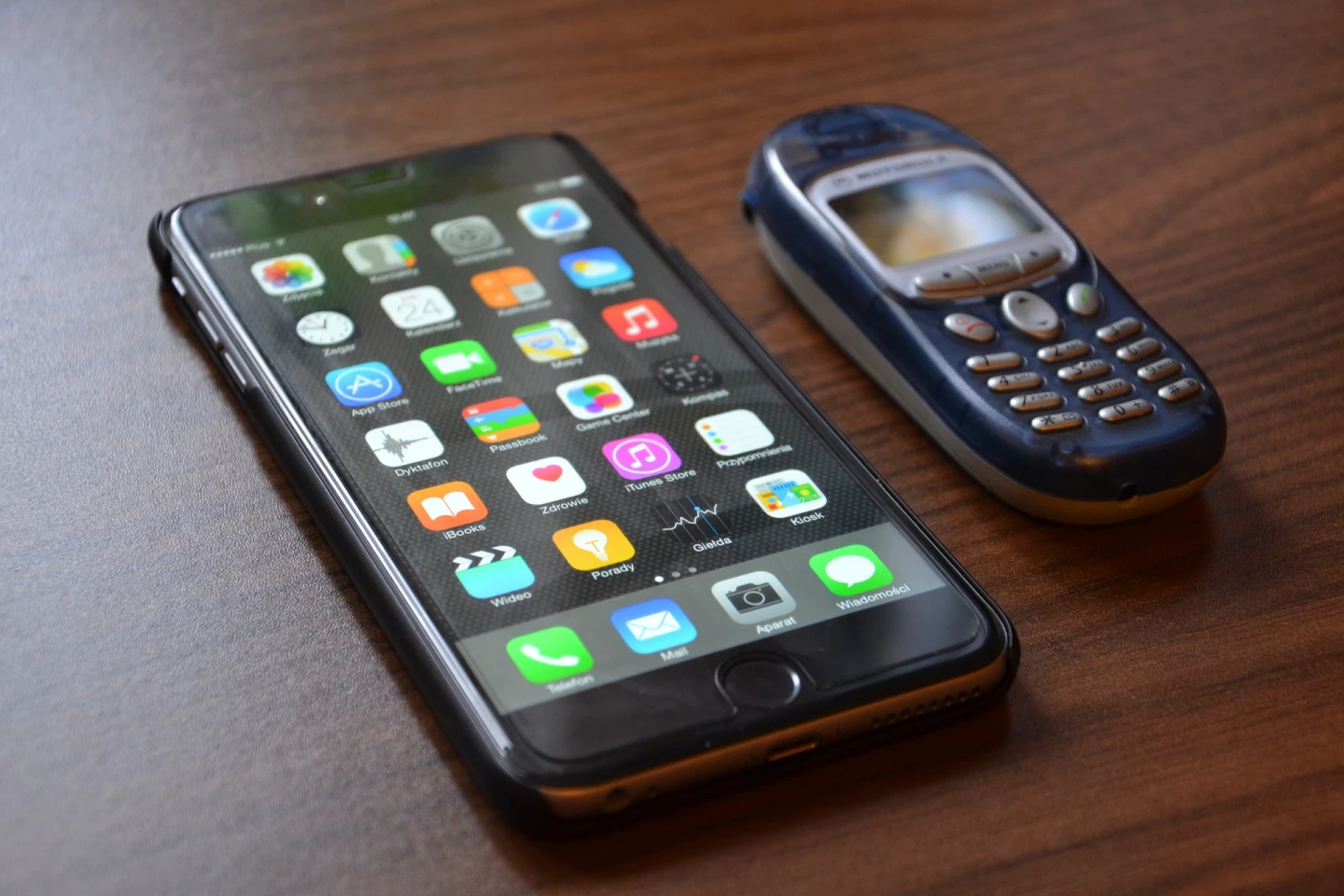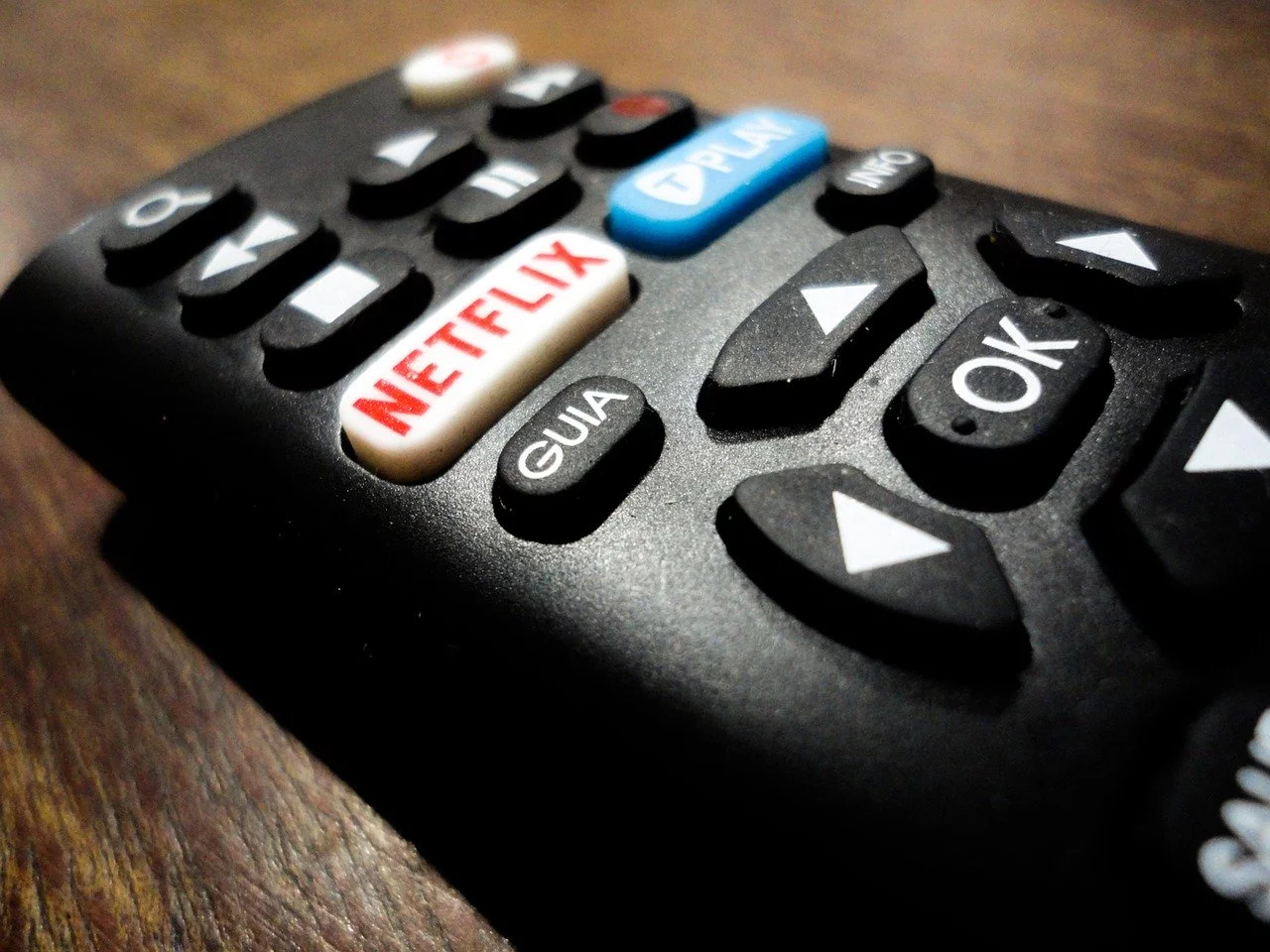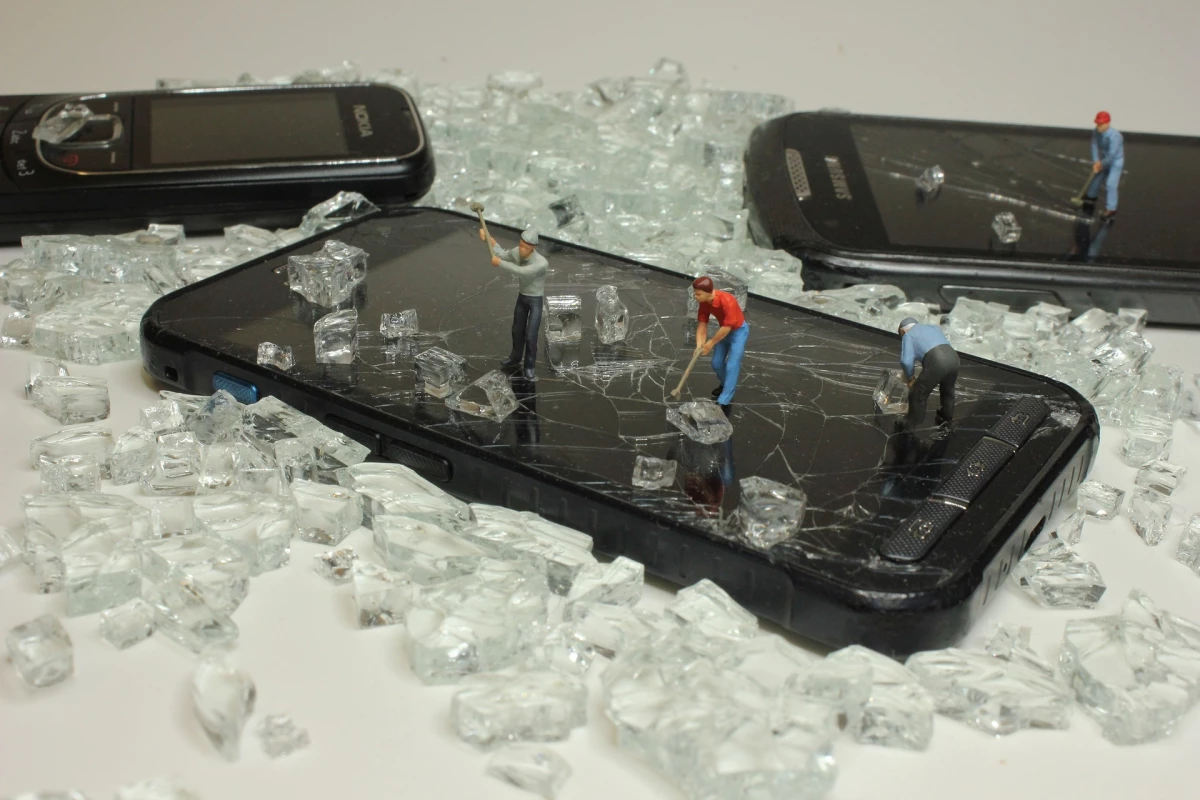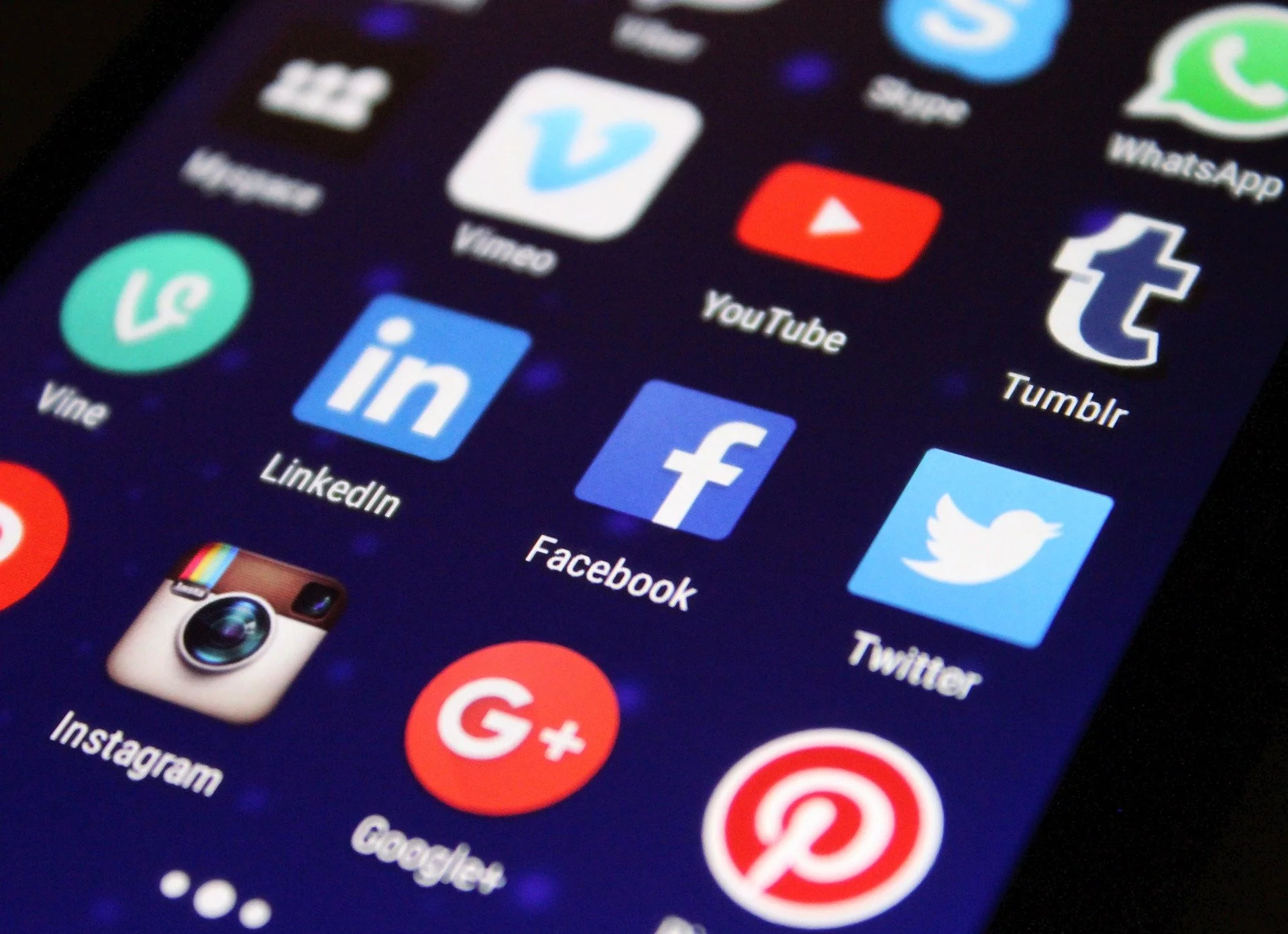Remember hailing a taxi on the street or unfolding a giant map for directions on a road trip? How about calling a restaurant to order home delivery, listening to music off a compact disc, renting a DVD to watch a movie, or looking at physical photographs in a real photo album. And when was the last time you went to a bank to withdraw cash? Ten years ago a mobile phone was primarily a device used to make voice calls or send text messages, now it's a tiny computer that has supplanted all these aforementioned tasks, and many more.
Technology has so profoundly transformed our lives over the past 10 years that it’s a little difficult to remember how life used to be. What did everyone do on public transport before smartphones? How were events organized without WhatsApp or Facebook group chats? What a hassle it must've been to track down a specific CD or DVD when you wanted to listen to a certain song or watch your favorite movie.
Three technologies have fundamentally changed our entire way of life over the past decade – smartphones, social media and streaming.
They all existed in some kind of nascent form prior to 2010, but no one could have guessed how radically they would change the world. On a micro level these technologies dramatically altered how we communicate with one another, but zooming out the effect was even more disruptive on society. From influencing the outcomes of elections, to shifting the methods of production across a number of massive industries, these three technological innovations have been taken up by massive volumes of the population and shaped the way we live.
Here is a brief look at the three technologies that changed the world, from how things were back in 2010, to how things are today, and maybe ... where these innovations could lead us in the decade to come.
From dumb phones to smartphones

Where we were ...
The idea of a smartphone obviously didn't appear out of the blue over the past 10 years. Cell phones with broader internet and multimedia functionality certainly played a major part in the life of any young tech-savvy power-player in the early days of the 21st century. But it wasn’t until the iPhone launched in 2007 that the nascent idea of a smartphone truly began to take shape.
The stylish design and capacitive touchscreen was a revolution in mass market interface technology. But even then, despite the iPhone’s rapid success, it took the masses a few years to accept the transition.
At the beginning of 2010 smartphones comprised less than 20 percent of the overall mobile phone market in the United States. Even with iPhone up to its 3rd iteration, Apple was still behind on smartphone sales. The now old-fashioned BlackBerry presented as the smartphone to beat, with its appealing mini-keyboard winning over most people wanting to send and receive emails through their phone.
Jump on public transport in 2010, pull out your touch sensitive iPhone, and you most certainly would have stood out.
Where we are ...
Growth of the smartphone industry over the past decade has been ridiculously rapid. By the end of 2012 there were one billion smartphones in use around the world. By 2013 smartphone sales for the first time exceeded their old-school dumb counterparts. By 2019 over 80 percent of the US population owned a smartphone.
And that dramatic increase in smartphone use was underpinned by a profound shift in how each and every one of us spend our time. For example, in 2012 the average daily amount of time spent on a mobile device was 88 minutes, presumably through a combination of actual phone calls, laborious text messaging using a number pad, and playing the most addictive game in history … snake.
By the end of 2018 that average daily time spent on a mobile device had jumped to an astounding 203 minutes. Obviously the internet-connected smartphone is so much more than an old-fashioned cell phone. In fact, it is that very connectivity that has defined the omnipresence of a smartphone, with over 50 percent of total internet traffic in the United States currently coming from smartphones. And, for an even more mind-bending statistic, we shift our view to China where an incredible 98 percent of all internet users are on smartphones (that's 788 million mobile internet users as of late 2018).

Where are we going ...
Over the last decade smartphones have transcended their primary function and turned into a tiny computer, fundamentally used to interface with an increasingly cloud-based internet. Beyond voice calls and text communications, smartphones now offer everything from photography, maps, music and transportation, to banking, shopping and food delivery.
And thinking about smartphones as an interface device is the best way to envision where the next decade will take this technology. Through a combination of augmented reality (AR) and smart wearables the next decade will begin to shift our focus away from staring at a single small screen device, often kept in a bag or pocket, and toward a variety of devices offering new, smoother ways to navigate the digital world.
Apple is rumored to be on the precipice of finally launching an AR headset sometime in 2020, preceding a more revolutionary, and smaller, pair of AR glasses possibly by 2023. The company has been working on the software side of things in public through its ARKit development platform for a number of years. Google Glass may not have been successful over the past few years but it could have simply been a little ahead of its time. Both AR software and heads-up-display hardware are evolving fast, and if the iPhone and iPod are any indication, Apple is a company that knows how to design devices for easy use.
Apple isn’t alone in seeing AR as the future of human-technology interfacing – Microsoft, Sony and Samsung have all been staking claims on experimental patents over the past few years suggesting our current fancy smartphones are just a step on the continuum toward invisible integrative technology.
Even further down the line are smart contact lenses, offering a virtually invisible interface that could theoretically function as everything from a tiny video camera, to an augmented heads-up-display.
Social media's great social experiment
Where we were ...
In 2010 social media was by no means new, but its burgeoning growth was only just signaling how culturally transformative it would ultimately become. Facebook, for example, had around 500 million global users, yet Zuckerberg and his team were still figuring out how to commodify the technology. In fact, the company had only turned cash positive in late 2009 after enhancing its advertising models.
In 2010 David Fincher’s Oscar-winning film The Social Network was released. Telling the story of the rise of Mark Zuckerberg the film came at a time where the initial social impact of Facebook on modern culture was relatively clear. Fincher, and writer Aaron Sorkin’s portrayal of Zuckerberg delivered a treatise on how a narcissistic, socially maladjusted nerd essentially projected his dysfunction onto the world. At the time the film felt like the final chapter of a story from the prior decade but little did the world realize this was actually the beginning of a larger, more divisive story of social control, free speech, and battles over the spread of misinformation.

Where we are ...
The story of social media across the 2010s is one of alternating monopolies, underpinned by extraordinary and overwhelming growth. By the end of 2019 Facebook is still easily the most dominant platform with nearly 2.5 billion users. However, the story of the last 10 years has been one of Facebook taking over the world, and then beginning to fall apart.
While Facebook now owns many of its competitors, such as Instagram and Whatsapp, user growth on the platform has stagnated since 2017. Younger demographics have begun to turn off Facebook, with their social media use fragmenting across a variety of different platforms. Instagram, Snapchat, Tik Tok and YouTube all take various shares of the user pie now.
But perhaps the most significant problem faced by social media platforms in 2019 is the slow realization from many users that their personal data is being harvested by these companies for profit. Across the 2010s social media companies struggled to find a way to profit from their platforms. The solution turned out to be advertising, but not as we traditionally knew it. Instead, we were treated to the birth of super-powered, targeted advertising, where an advertiser could aim its promotions with unprecedented precision at exactly the type of person it wanted.
Now, at the dawn of the 2020s, Mark Zuckerberg is regularly facing US congress, explaining why his mega-company should not be subjected to extensive new regulations. Did nefarious behavior on Facebook actually influence the course of the 2016 US Presidential election? We may never know for sure or to what degree, but it is becoming increasingly clear that social media platforms can effortlessly amplify the spread of misinformation, from anti-vaccine fake science to stoking divisions between the left and right.
Where are we going ...
With some prominent 2020 US Presidential candidates campaigning on the back of policies determined to break up big tech monopolies such as Facebook, it is clear the tide has turned on some of the defining social media brands from the past decade. But make no mistake, platforms such as Facebook and Twitter are not going anywhere.
Instead, the next decade will offer a more fragmented assortment of platforms, housing increasingly niche communities serving a vast array of different demographics. Facebook, a platform with an aging demographic, may turn into the senior citizen of the social media community. New platforms will rise, old ones will fall.
The evolution of smartphone technology will offer new iterations on old ideas of social media. How does Twitter work if one is wearing a set of Apple’s prospective AR glasses? What happens to Instagram when we finally get smart contact lenses with the ability to take instant photographs at the literal blink of an eye?
Lose the disc, jump in the stream

Where we were ...
With DVD sales peaking between 2004 and 2007, by 2010 it was clear streaming media was on the rise and physical media was on the decline. Blockbuster Video filed for bankruptcy late in 2010, with Netflix's "we'll mail it to you" model claiming total supremacy over the DVD market.
The world of streaming was still relatively young in 2010. Netflix had certainly amassed millions of streaming subscribers in the United States but it hadn’t spread across the world. Hollywood could sense an oncoming shift in the distribution landscape but old machines are slow to adapt, and big companies were happy to take large licensing cheques from Netflix to allow the streaming service access to massive troves of old content.
Things were somewhat in a similar position in the world of music. Although, the music industry had already begun grappling with the decline of traditional business models with CD sales plummeting in the early 2000s. Initially Apple’s iTunes service had staked a claim on the digital market, and people were still buying music. In 2010, Spotify was still a young experimental start-up in Europe, yet to launch in the United States.
Where we are ...
In 2019 it is fair to say streaming media has not only fundamentally changed the entire film, TV and music distribution landscape, but it has started to disrupt those industry's core means of production. As of late 2019, Spotify has nearly 250 million monthly users worldwide and Netflix has over 150 million worldwide monthly subscribers.
Netflix cleverly understood early on that it could not sustain its business model by being reliant on licensing content from other distributors. In 2011 it announced its intentions to produce its own content, and in 2013 released its first original show, the political drama House of Cards. Since then it has spent tens of billions producing original content, amassing a growing library of its own film and television projects. In 2019 Netflix spent around $14 billion on original content.
By 2019 the music industry had been permanently disrupted by the streaming boom. Around 80 percent of the industry’s total overall revenue came from streaming services in late 2019. Perhaps the most concerning point is that despite Spotify’s incredible global dominance, and its ongoing battles with artists over royalties, the company has almost never made a profit (it reported its first operating profit of around $107 million in February 2019).

Where are we going ...
In 2020 the streaming wars will be in full effect, with every major Hollywood company making a play for a share of the streaming pie. Disney+, HBO Max, Amazon, Hulu, Apple+, CBS All Access, YoutubeTV, are all shooting for Netflix. And that doesn’t even touch on the multitude of smaller, niche streaming services such as AcornTV, BritBox or The Criterion Channel. How many individual monthly subscriptions are you willing to sign up for?
Cinemas and general broadcast TV channels are all on the back foot as the majority of film and TV content is now made for streaming distribution. The big screen experience will certainly not die, but it may trend toward massive blockbuster spectacles, with any kind of other content relegated to streaming cul-de-sacs. The future of cinema exhibition in the 2020s will come down to how swiftly theaters can accept the new world, and adapt to it.
Physical media won’t die, but instead it will move to the realms of collectors. Of all the mediums music is sold, vinyl will continue its Lazarus-like rise from the dead, ironically laying claim as the most collectable medium. But for most people, a DVD, VHS, CD or cassette collection will be a thing of the past as streaming becomes the primary way people consume all forms of entertainment.
And then ...
Just as these three technologies existed in nascent forms prior to 2010, the technologies that will shape the 2020s most certainly exist today. Let us know in the comments what technology you think will transform our lives over the coming decade. Will self-driving electric cars change the way we travel? Are voice-controlled devices going to become as popular as some advocates hope? Or will the renaissance of virtual reality eventually cross-over into the mainstream and we'll see VR headsets in every home?










